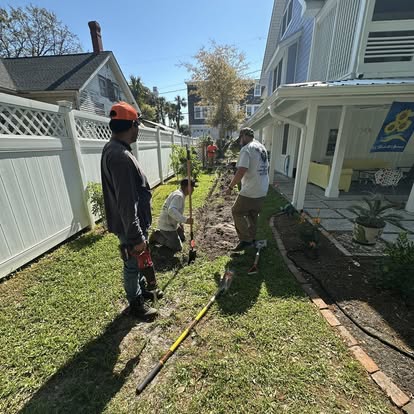
Reducing Water Waste: Effective Drainage Strategies for Waterlogged Landscapes Sep 28, 2025
The journey to an optimized outdoor environment begins with understanding your landscape’s drainage patterns. Identifying areas where water pools and examining the soil’s drainage capacity are critical steps. Many waterlogged areas suffer from compacted soil, which inhibits water flow and absorption. Soil aeration techniques, such as aerating with a garden fork or using core aerators, can improve infiltration and promote healthy soil.
Another effective strategy is the installation of French drains. French drains are trench-like systems filled with gravel and a perforated pipe to redirect water away from saturated areas. These systems are particularly beneficial because they not only alleviate pooling but also help to guide water into areas where it can be better utilized or absorbed. French drains should be installed by professionals to ensure proper gradient and placement for optimal drainage effectiveness.
For landscapes with extensive drainage issues, the construction of a rain garden can be a sustainable and aesthetically pleasing solution. A rain garden is a shallow depression planted with deep-rooted native plants and grasses designed to absorb rainwater runoff. These gardens serve dual purposes: supporting local biodiversity and significantly reducing water waste by directing water back into the ground. Selecting appropriate plant species is crucial for rain garden success; native plants with deep root systems are often preferred as they are adapted to the local climate and soil conditions.
Incorporating permeable surfaces within your landscape is another strategic approach to handling excess water. Unlike traditional concrete or asphalt, permeable materials allow water to seep through the surface, reducing runoff and encouraging groundwater recharge. Options such as permeable pavers, gravel, or even specially designed turf can provide functional and attractive alternatives to standard impervious surfaces.
Adjusting your irrigation system plays a vital role in preventing water waste. Over-irrigation is a common culprit of waterlogged landscapes, leading to both water waste and plants being deprived of oxygen. At Coastal Irrigation & Drainage, our team can help you optimize your irrigation schedule to match the specific needs of your landscape. Implementing smart irrigation controllers that adjust watering based on weather patterns and soil moisture levels is an effective way to minimize water usage efficiently.
In conclusion, reducing water waste in waterlogged landscapes is attainable with the right strategies in place. Whether it’s improving soil structure, installing drainage systems like French drains, creating rain gardens, choosing permeable surfaces, or optimizing irrigation practices, each method contributes to a healthier, more sustainable landscape. Engaging these strategies not only enhances your garden’s health but also aligns with eco-friendly practices, reducing your environmental footprint.
At Coastal Irrigation & Drainage, we are committed to helping you achieve a balanced ecosystem, ensuring your landscape thrives without excessive water use. By taking these proactive steps, you secure a flourishing garden and play a part in water conservation efforts. Let’s work together to make your garden efficient, beautiful, and resourceful.
/filters:no_upscale()/filters:format(webp)/media/6842295f-caed-4647-94f2-d2375c215306.jpeg)